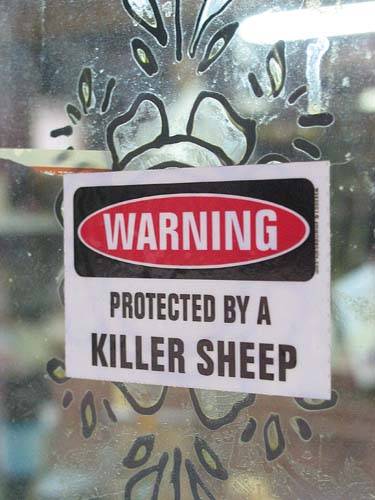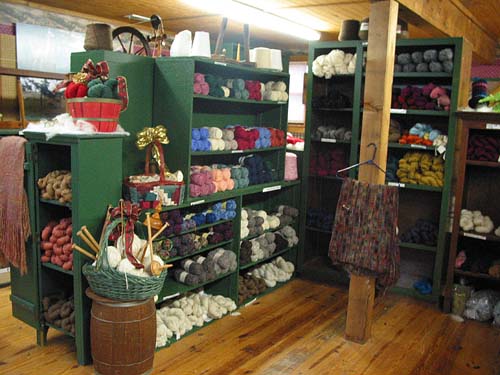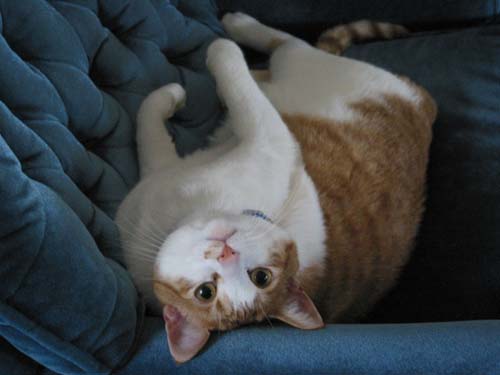Befriend your local crack dealer
In this world, there are two kinds of yarn shops. The first are more prevalent; they have skeins and cones of yarn arranged in graceful rows of manufacturer, fiber, and colorway. They believe in browsing, newsletters, and knitting classes, and the employees proudly wear their hand-knitted clothing like the store samples they are.
Those are yarn shops.
But there is another kind - the kind buried not in the small-businesses section of southeast Huntsville, but buried in a sea of directions that start off like this: "Take Rideout Road until it dead-ends into Highway 53. Turn left and head toward Harvest. I don't remember how many flashing yellow lights you'll go through, but one of them's for McKee Road. Take a right, drive a ways, and we're on the left. We lock the front door while we're in the back, working with fiber, so it may take us a minute or two before we can get the door unlocked for you."
That, my friends, is a crack dealer in the guise of a fiber shop.
Indication #2 that you have left the land of the sane and entered a land where others are as entranced by good fiber as you are: the sign on the front door says 'protected by killer sheep' and you suspect they might not be kidding.

Indication #3 would be the following sentence on the website: "We do close occasionally to tend sheep."
It's an unassuming little shop, with a gravel-and-earth driveway blanketed with the fall of this year's leaves, tucked into the side of a side road so far out of town that no one would ever find it by chance.

Our recent purchase of fiber for Kat's birthday resulted in Misty and I receiving the full tour of the machinery - tucked, as the name would suggest, into a little barn in the back of shop. The magic happened back there: fiber was spun, twisted, and wound into cones and skeins.
Inside the yarn shop, there were packets of reflective or luxury filaments to be combined with fiber and turned into yarn.

For the hand-spinner, the wall of fiber contained bags upon bags of washed and carded fiber for spinning.



For the novice, samples of fibers to handle.

(I had no idea that such a thing as 'camel down' existed. You learn something new every day.)
The vast majority of their business is with other companies; few local knitters are aware that they make their wares available for individual sale.

Last visit's magic was found behind the shelves, when the owner showed me around the store and pointed to the mini-library in back. "Now, you know we've got a little lending library, right? No charge to check out books. We go to a lot of shows, and we often end up coming home with books. Lots of them go out of print, so they're hard to find. We like to make them available, because good books are hard to find."
I came home with a book that was the detail of a conservation effort of a sixteen-foot (yes, feet) knitted lace sampler, created by some unknown German or Austrian woman in the eighteenth century. Each pattern stitch was analyzed, recreated, documented, and photographed.
For the next three nights, this book was the last object I stared at before falling asleep.
I returned the book today, driving fast to get home before the impending storms reached Huntsville, and found myself drawn by black or fiber magic back to the lending library once again. I emerged ten minutes later with new books. In the next ten minutes I got the basics of two-handed Fair Isle knitting (oh. my. God. I. must. try. this.), and learned that the shepherd's photograph on the wall was of the man who wrote the book I held in my hands.
I then remembered my curiosity about a fiber I'd never gotten to try before, and asked her, "By any chance, do you plan on carrying angora yarn anytime soon?" She smiled, and walked back to the shelves.
Go back to this photo, and look carefully atop the shelf.

See the four cones of yarn? She retrieved one and handed it to me. She sat back down and talked while I handled the yarn - telling me that it was a sample cone made by a man in India, and that they were currently trying to negotiate import and customs restrictions so that they could purchase the yarn.
I have to tell you: I have felt scratchier kitten fur.
"How much would a cone like this cost?"
"About a hundred, maybe a hundred and fifty, dollars."
"It would have to be something special, but I think I'd have to work with it just once so I could say I had."
I'll finish my black-and-white sweater, continue working on the burgundy scarf, and hopefully finish Geof's blue hat before spring. Hopefully by then I'll have forgotten what that angora yarn felt like in my hands. Otherwise, I'm in real trouble.
Crack dealers, indeed.
* * * * *
For those of you who read this far, a bonus photo. Some of you have seen this already. Silly Edmund.


Comments